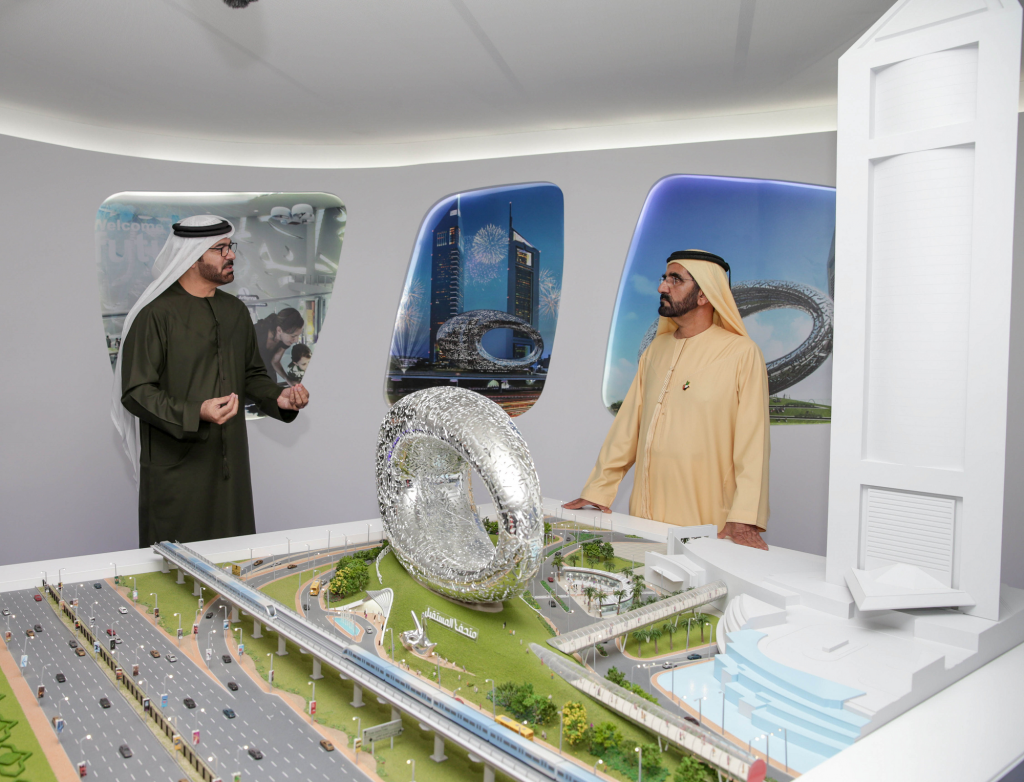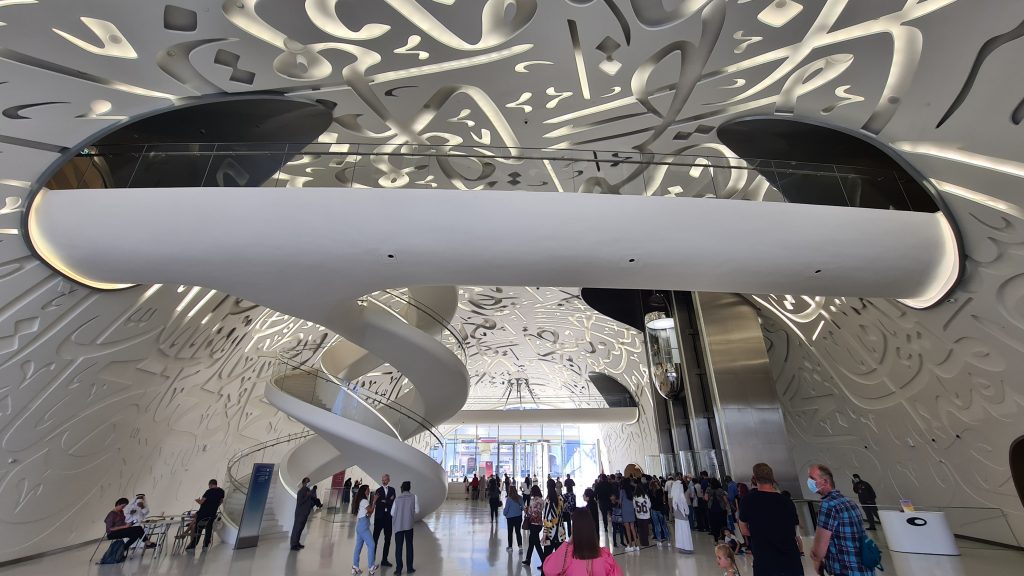The Museum of the Future.. Dubai’s gateway to the future

Dubai recently welcomed the public to the Museum of the Future, a visionary project inaugurated by Sheikh Mohammed bin Rashid Al Maktoum, Vice President and Prime Minister of the UAE, on February 23rd. Designed to transport visitors on an immersive journey to the year 2071, marking the centenary of the UAE’s founding, its creators envision it as more than just a museum. It’s touted as a hub for scientists, thinkers, and researchers to breathe life into bold ideas and future visions.

Mohammed bin Rashid attends Mohammad Al Gergawi‘s presentation of the Museum of the Future project in 2015
Unique Architecture
Extraordinary in its design, the museum stands as a testament to engineering ingenuity. With seven floors and a sprawling 30,000 square meters, its pillar-less structure reaching 77 meters high is a marvel. Architecturally sleek, it boasts a stainless-steel facade adorned with inspiring Arabic calligraphy by Emirati artist Mattar bin Lahej. Powered by 4,000 megawatts of solar energy, generated through solar panels, it’s a sustainable feat. Shaun Killa led the architectural design, while the Dubai Future Foundation spearheaded its creation.

Gateway to the future
At its core, the museum harnesses cutting-edge technologies like virtual and augmented reality, artificial intelligence, and big data analysis. These tools unravel the mysteries surrounding humanity’s future, from urban landscapes to life beyond Earth. It hosts innovation labs focusing on various domains such as health, education, and smart cities, alongside permanent exhibits showcasing future innovations. With a keen eye on space exploration and genetic advancements, it offers a glimpse into humanity’s evolving trajectory.
Most ambitious project
Shaun Killa, head architect of Killa Design, describes the museum as his most ambitious undertaking. Crafting its distinctive curved structure involved intricate planning and the use of advanced modeling tools. Over 1,000 molds were meticulously crafted to support the fiberglass and stainless steel facade, resulting in a seamless and environmentally conscious outer shell. Killa envisions the museum as a potential global icon, with its innovative approach setting a precedent for future architectural endeavors.
Creating a smooth and environmentally friendly outer shell challenged the architects’ creativity. Killa sees the finished result as innovative, setting a new standard.”The entire facade system is unified,” he explains, noting that it integrates the structure, windows, insulation, and waterproofing into a single system. “This has never been attempted before.”Killa foresees the museum becoming a global icon and believes its pioneering methods could inspire wider adoption in other projects.